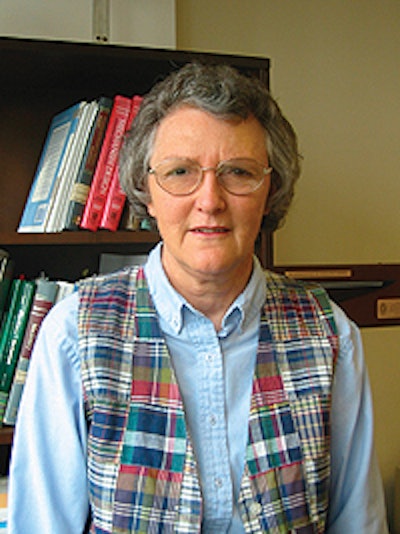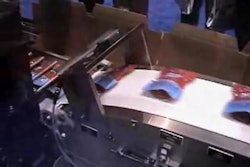Some packaging managers decry the fact that university packaging graduates seldom have more than a rudimentary understanding about packaging equipment. Is the criticism valid? If so, what can be done?
John Hunt, a 3M Co. specialist in packaging equipment, feels that some U. S. universities could improve their programs and the value of their graduates by increasing the focus on the packaging equipment and automation side of the packaging process.
Naturally, it’s far easier for schools to focus on the materials side of the packaging equation. And there is some equipment component to the curriculum at each of the largest packaging universities. But because of the incredible variety of packaging machines, the courses can’t be very specific. And, say some packaging teachers, they’re purposely trying not to turn students into mechanical engineers or electronics technicians.
However, some end users lament the fact that many university graduates have had only modest exposure to packaging machinery, often most of it coming via internships or co-op experience with manufacturers. Some say the biggest void is not just in knowing how equipment works, but understanding what types of machinery are available.
Understanding machinery
Hunt is one of 3M’s specialists on the equipment side of packaging. He and his colleagues assist 3M’s 35 separate divisions to achieve effective packaging of a diverse number of products that come in bottles, cartons, cases, pouches, and over-wraps shipped to retail and industrial markets.
“It’s not necessary that the graduates become mechanics on the production floor,” Hunt says. “The two-year trade schools such as Dunwoody Institute in Minneapolis do an excellent job providing technicians who know the ‘nuts and bolts’ of the equipment.
“However, the ideal university program would have their graduates well versed in how package design and materials integrate with packaging equipment,” he suggests. “This would require a greater focus on what’s available in packaging machinery, how the machines work, and knowing when and where they should be specified. These graduates would be very comfortable in equipment selection, specification, and purchase. One only needs to attend the Packaging Machinery Manufacturers Institute’s Pack Expo Intl. exposition to grasp the tremendous impact and importance of packaging equipment in the overall packaging process.”
One university that does train packaging graduates in a mechanical-type curriculum is the University of Cincinnati. Laura Caldwell is a professor in that school’s mechanical engineering technology program that includes courses with a packaging flavor.
Can’t have it all?
“Yes, our students who take packaging-related courses do know more about packaging machinery,” Caldwell says. “Our mechanical engineering technology curriculum graduates know how to design machinery. But they’re weak on the materials side. It seems almost like you cannot have both.”
It’s no secret that one of the major factors that have tilted the UC program toward packaging has been machinery builder R. A. Jones Co. (Covington, KY), located just across the Ohio River from the school. Many UC students have interned at R. A. Jones, Caldwell says, and the company told the school it liked the graduates from this program because they really can design equipment.
Caldwell adds, however, that even the graduates with packaging experience don’t always take jobs with machinery builders. In fact, Cincinnati-based multinational manufacturer Procter & Gamble has hired a number of these technology graduates, Caldwell says.
“Procter & Gamble was a little reluctant at first to hire these mechanical engineering technology graduates,” she recalls. “What the company discovered is that because we have so much hands-on experience in our curriculum, these graduates feel very comfortable going out to troubleshoot packaging equipment in P&G’s plants.
“Not only could our graduates determine why a packaging machine was malfunctioning, but they have enough design theory to be able to design the machinery from scratch.”
In fact, Caldwell reports that at least five graduates from UC’s MET program work at P&G on global packaging design and problem solving.
Drawbacks too
Although UC graduates mechanical engineering technologists, not all of them have a packaging interest. “We’re kind of the ‘stepchild’ in the packaging education community,” she points out. “We truly are a traditional mechanical engineering curriculum. We have some technical electives that students can take in packaging. But they’re not required.
“What the program—and thus the students—are weak in is obviously the packaging-specific details of machinery,” Caldwell says. “Terminology in packaging materials is not our strong point, and they’re very unique. And we don’t get into graphics, labeling, or adhesives. We just don’t have that kind of curriculum.”
Although Caldwell says UC offers just two packaging-specific elective courses, several other courses display a packaging accent. The two electives include Fundamentals of Packaging Technology, using the Walter Soroka-authored text of the same name, published by the Institute of Packaging Professionals, Naperville, IL.
The other course, simply called Packaging Machinery, is an advanced course that looks at systems design and development and ends with the writing of a contract specification that includes component selection.
Other courses
However, two other courses employ the Machinery Components text, published by the Packaging Machinery Manufacturers Institute (Arlington, VA). One is titled Mechanisms, and the course description calls it a “classical study of linkages, cams, and gears.” Also, a video of packaging machinery is used for introduction. The other course, Design of Machine Elements, studies power transmission elements of equipment.
A course called Mechanical Design is an advanced class in dynamic loading conditions, linkage synthesis, dynamic analysis, and cam design. The class develops a different project each year, but the syllabus notes that a cardboard partition feeder and a cam-driven mechanism for a packaging machine were two past projects.
Another course, Motion Control, studies sensors, servomotors, and open- and closed-loop controls. The Manufacturing Automation course is said to focus on the integration of PLCs, PCs, and robots. Finally, each senior must submit a Senior Design project, including the building of a prototype. Some of these projects come from the packaging equipment needs of companies such as R. A. Jones and Procter & Gamble. One example was a redesign of a transfer star assembly for a high-speed beverage packer.
Day and night
The University of Cincinnati reports that its mechanical engineering technology program graduates 35 to 40 students each year, although the program has about 400 students at any one time. Partly, that’s due to both day and night classes.
“We have a fully accredited evening program that exactly parallels the day program,” Caldwell says. “Students who are working in industry and want to come back and finish a degree, either an associate’s or a bachelor’s, often attend the night classes and are sponsored by their companies. R. A. Jones has sponsored some of them.”
The educator acknowledges that graduates from her program are easily placed, and usually at salaries at the high end for bachelor’s degreed grads. “In the past, we’ve had virtually 100% placement, and the salaries compete with almost any curriculum at this university at the bachelor’s level.”
The school also accepts transfer students, whether from a community college or a technical school. “If these students have an associate’s degree, they can do a ‘plus-two’ to obtain their bachelor’s degree here,” Caldwell says. “But they have to be really good students because our curriculum is pretty demanding.” Some of these transfer students come from associate programs at technical schools such as Dunwoody.
How PEF helps
The Packaging Education Forum and the Packaging Machinery Manufacturers Institute each provide some input on machinery education. PEF generally works more closely with the four-year universities, such as the University of Cincinnati, while PMMI focuses more on two-year technical schools.
“PEF underwrites scholarships for packaging education, and we encourage the study of packaging machinery as one of the areas that we think is vital,” says Ben Miyares, president of PEF. “But because of the makeup of our board of directors, we have no particular bias. We operate pretty much technology-neutral.”
Miyares says that PEF does help universities design courses that relate to equipment. One of the forum’s charges is to help the packaging programs reflect the needs of the packaging business. “We are currently underwriting some research at the University of Missouri at Rolla that’s studying the marketplace for machinery, especially as it relates to systems integrators,” Miyares reports. PEF maintains an ongoing dialogue with the universities, he says.
Switching hats to his role as vice president of industry relations at PMMI, Miyares says that group provides money to all types of schools to help underwrite expenses for students to travel to Pack Expo Intl. and Pack Expo Las Vegas. In exchange, the students are asked to work a four-hour day, either as ushers at the conference or as booth attendants.
“Some students come looking to establish internships,” he says. “PMMI encourages that through an internship message board in the Education Pavilion. Companies looking for interns can post a notice, and the students can often schedule an interview.” At the same time, students usually have plenty of free time to walk the show floor to see the machinery in action.
Along with these programs, packaging education advocates such as John Hunt and Laura Caldwell will continue to try to expand the technical machinery education and pique the interest of students everywhere. Nonetheless, whether any one program can teach machinery engineering and the specifics of packaging materials and processes is still an unanswered question.






























